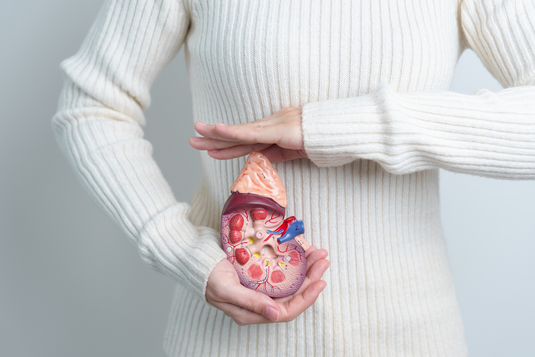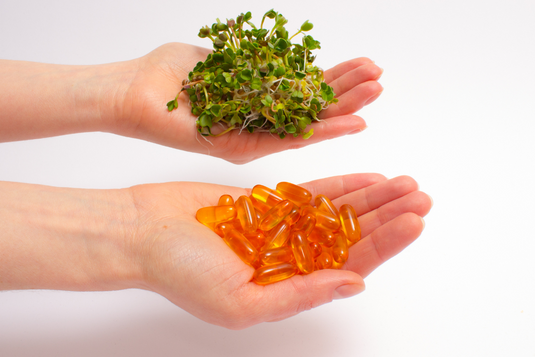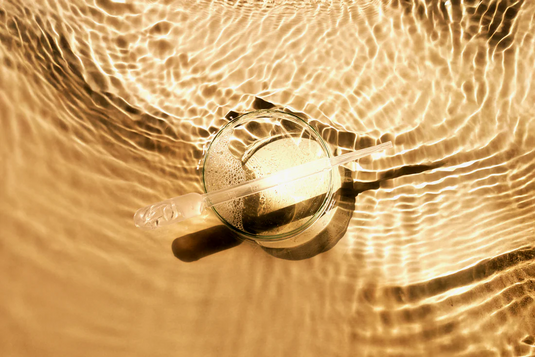Medical studies and science are unaware that our adrenal glands actually produce 56 different adrenaline mixtures designed for a number of different functions. Some of these blends are lightweight—for situations like talking on the phone, taking the kids to school, checking the mail, making a shopping list, and doing laundry. It makes a huge difference to the liver whether it absorbs this everyday kind of adrenaline or the more familiar kind that the adrenal glands produce during times of great stress, exertion, worry and grief.
When it comes to the second type of adrenaline, the liver makes a special effort to protect us. This mixture of adrenaline is strong to help us survive betrayal, jealousy, pain, fear, assault, loss, confrontation, lost trust, neglect and high adrenaline activities such as skydiving, bungee jumping and extreme cleansing . Even a thoughtless comment from someone in the office can make our blood boil and shake us with a rush of adrenaline activated when the brain detects a threat. The liver's role is to clean up after what has happened. It is a natural process that helps us cope with life's vicissitudes.
In this day and age, when information, demands and feedback come at us faster than ever, we experience many such rushes of corrosive adrenaline - sometimes much more than we should ideally. Their adrenal glands have to work extra hard – and so does their liver. Every liver deserves a medal of bravery for taking on the task of controlling adrenaline.
Neutralization of adrenaline
Let's take a closer look at the connection between adrenaline and the liver in our daily life when we are not undergoing cleanses. Whenever there is an excess of adrenaline in the blood, the liver must try to absorb and neutralize the hormone, and this is both a miraculous process and a serious task that, if we are not careful, can become too serious.
Although stress is generally thought of as a bad thing, a certain amount of it is actually beneficial. It motivates us to move forward and strive to fulfill our important goal. As already mentioned, in certain amounts, adrenaline is also good for health. ( You will find the necessary information on how to use stress to your advantage in Anthony William's book "The Most Useful Foods" . ) However, when the body is subjected to too much stress and stimulation, extreme cleansing , adrenaline rushes from extreme activities and too much long breaks between meals, the adrenal glands continuously release adrenaline, which has a toxic and corrosive effect on the nervous system and the rest of the body if left unchecked. ( The adrenal glands also secrete cortisol, which is like the good kid that comes after the bad - adrenaline. When adrenaline is neutralized and behaves properly, cortisol regains balance and becomes more tolerable and useful. If cortisol goes out with adrenaline at night before Halloween, there's a good chance cortisol will follow suit and throw in another egg and roll of toilet paper. ) We must always remember that the toxic, corrosive nature of uncontrolled adrenaline is not due to the body trying to kill us. the functions of this hormone are life-saving. The adverse effects of its excessive amounts are due to our stressful everyday life.
Immune cells, such as lymphocytes, monocytes, basophils, and neutrophils throughout the body, rely on the liver when adrenaline rushes in from the adrenal glands. These immune system components are nervous and run and hide because they don't want to be burned. They know they are at risk of getting hurt and crippled by the adrenaline, so they rely on the liver to take the hit. The liver's immune system is supposed to be the strongest and most intelligent in the body, with highly intelligent white blood cells protected by a filmy shield produced by a chemical function of the liver that is still unknown to medical research and science and that uses an amino acid, a unique mineral salt and a liver cell protein to help the immune cells withstand to some extent the burning effect of adrenaline.
A healthy liver can really protect the spleen and the entire immune system. In adrenaline rushes, this gracious and brave savior of the body acts like a sponge. Adrenaline enters in almost every conceivable way, flowing into the liver through the hepatic portal vein and hepatic artery, being absorbed through pores throughout the liver, and entering from adjacent lymphatic vessels. The liver absorbs the excess hormone to prevent damage elsewhere. This is self-sacrifice, since adrenaline does not help the work of the liver lobules. The excess adrenaline that the liver absorbs is also an enemy of its personalized immune system. An alarm is set off (different from the alarm when the liver releases too many poisons at once) to warn the body that its immune system is compromised and multiple tasks need to be done immediately - such as immune cells protecting important assets. Liver cells go to work and a miraculous chemical function is triggered, where they produce a solvent-like natural agent that acts to protect us.
The building blocks of this chemical compound are old, junk hormones that the liver has collected, neutralized and changed over time. These are normal hormones that the body has produced in the past, such as sex hormones and stress hormones that have outlived their original purpose, as well as hormones that we get from problematic foods such as eggs and dairy products. Whenever the liver detects such hormones in the bloodstream, its plasma-producing cells capture, neutralize, and break them down to prepare them for their new, all-important task.
At the next adrenaline rush, they have the opportunity to fulfill this responsibility. When this alarm goes off, the liver's plasma cells activate and release the old hormones, starting the chemical reaction that turns them into this solvent-like substance. For example, if you experience intense fear or stress; you fall in love; you fall out of love; you experience anger, betrayal, pain, grief, anxiety or life's ups and downs, whether good or bad. Your adrenal glands will respond by pumping out lots of cortisol and adrenaline to support you with fight-or-flight endurance. The body knows that the price you will pay for this support is the damage that too many of these hormones can do on a physical, mental or even soul level. If uncontrolled adrenaline touches a valuable white blood cell of the liver's immune system, it will damage it. If it reaches the brain or intestinal lining, it will damage them. If it penetrates the bones, they can become thin and brittle. Alopecia—caused by weakening of the adrenal glands, an imbalance in their hormone production, and insufficient production of a certain hormone—can worsen as a surge of adrenaline further weakens the glands. A spike in adrenaline can exacerbate existing depression or trigger it. It can also feed pathogens in the liver, including viruses such as EBV , herpes zoster , and HHV-6 . A new chemical compound formed from old, reconstructed hormones can prevent all of this.
Once released, this agent's job is to both bait and trap fresh, excess cortisol and adrenaline. These newly produced problem hormones feel close to the old ones and are drawn to them with the idea that together they will be stronger. If you think hormones can't think, you're wrong. Biochemical substances like hormones contain immeasurable data that cannot be decoded by today's science or computers and never will be. If the human race survives the hatred, greed, and envy that drive them to war and other destructive acts, and we're still around in a thousand years, they still won't have decoded them. The amount of information in one hormone is so vast that it is like its own universe. Some of this information directs the hormones to be guided by the energy of the body and to tap into the energy of the human soul. That's why hormones are so tied to emotions - and it's one of the reasons why adrenaline is released in fear.
When the new and old hormones meet, the new ones stick to the old ones and are no longer as fast and agile. Like is treated with like – like when people clean their face with oil or use mushrooms to cure a fungal problem. A miraculous chemical reaction occurs when the new stress hormones released during times of painful, deep emotion or other extreme experiences and the old, stored and transformed hormones come together. They become one.
Together, these hormones make a wonderful couple. The fresh adrenaline and cortisol breathe life into the old hormones, and the old hormones cause death in the fresh ones by destroying information about fear, chaos, loss, betrayal, pain, grief and tension. The end result is that the old hormones override the new ones. They are the brakes on the roller coaster. They are the brick wall. Connected to each other, a balance is achieved. Now the liver, if functioning optimally, senses that adrenaline and cortisol are within acceptable limits, are no longer dangerous, and can be passed on to the kidneys for disposal.
As you already know, this is not always the case. When the liver becomes overloaded for any of the various reasons we've discussed so far, its ability to neutralize adrenaline and cortisol decreases. In an intermediate state, the liver is still able to process some of the old hormone, and is then forced to store the rest. If the liver is more exhausted, then it will store almost all of the bound hormonal compound in special compartments within itself. This storage is in the hope that someday the liver will get a break and have a chance to separate the compound for disposal from your body. When the liver fails to rest, the associated hormone compound becomes yet another stagnant waste that takes up space in the organ. As discussed in other articles, when the liver has to store too much, the result is usually weight gain. When weakened, the liver may also lose its ability to perform the task of neutralizing hormones. It will continue to help to the best of its ability, but it won't do perfectly, and some of the adrenaline will be free to deal corrosive damage.
Many people who experience betrayal, jealousy, pain, grief, neglect, irresponsible or narcissistic behavior, or any other adrenaline-pumping occasion experience adrenal fatigue afterward. Or the digestive system will become sensitive, as the liver weakens at the moment, busy absorbing the adrenaline - not to mention that any neutralized adrenaline that sneaks in is extremely corrosive to the intestinal linings and stomach. Because of the fuel that uncontrolled adrenaline is for pathogens, it's not uncommon to be apathetic, tired, and unwell—get a mild attack of low-grade mononucleosis from reawakened EBV , or low-grade shingles , or even mild eczema —after a difficult situation, such as the loss of a loved one a person, a broken heart or a bad breakup with a friend or partner. The liver's immune system, which normally keeps viruses like EBV in check, weakens at these times of adrenal stress.
During the extreme cleanse, the liver must choose whether to send out old, stored hormones to bind with the excess adrenaline and neutralize it, or not, because for this release, which the brain has signaled to the adrenal glands, it is there is a good reason - to protect the body from the poisons forced out of the liver. Adrenaline deliberately shocks the body, just as an epinephrine injection after a bee sting acts as an anti-inflammatory to stop the body's response to the venom. The liver knows what is best in this case - to let the adrenaline do its job, so it decides to hold onto the stored hormones that would neutralize it. Thus, he is forced to take the huge blow when a powerful influx of adrenaline rushes through the bloodstream. This is one of the reasons why there is no guarantee that a liver cleanse will be beneficial for it. If a cleansing method, based on myths and unsubstantiated theories, causes the liver to over-pour poisons, causing the secretion of double the amount of adrenaline, then the liver will take the brunt of it by absorbing both the active adrenaline and the poisons which he had previously secreted—and this, no doubt, is very harmful to him.
It's easy to assume that high-fat foods provide a buffer in the blood to absorb the shock of toxic adrenaline. Exactly the opposite. Fat slows down the movement of adrenaline, keeping it longer in the body. Without being able to be absorbed, neutralized, stored or excreted through the urine as it normally is, this adrenaline retains within itself the information related to its excretion. This means that with fatty liver or reduced liver function, which indicates that there is too much fat in the body, active and strong emotions remain, like that moment in the office when you realized that you were not called to a very important meeting . This is the secret of resentments, from which we sometimes cannot be freed. Cleanse the liver and get rid of the fat so the liver can finally process the adrenaline to keep you from reliving the moment over and over again.








